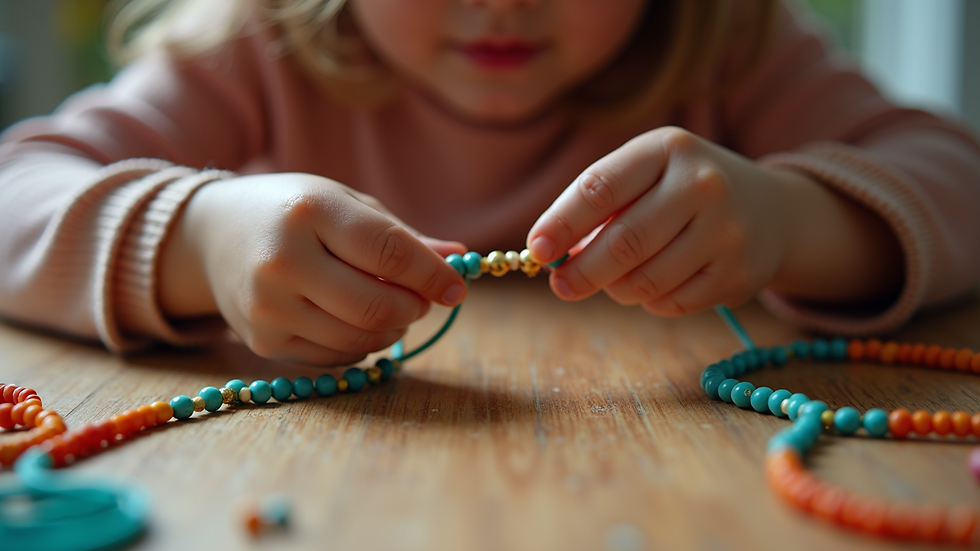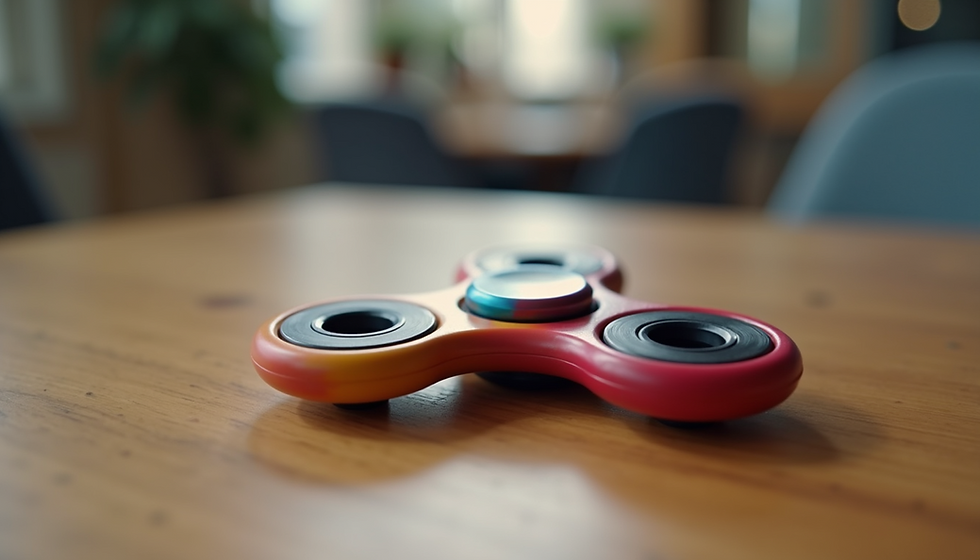Boost Your Child's Fine Motor Skills
- sensoryhaven4kids
- Aug 17
- 4 min read
Updated: Sep 29
Watching a child grow and develop new skills is one of the most rewarding experiences. Among these skills, fine motor abilities play a crucial role in a child’s independence and confidence. These small, precise movements, like holding a pencil or buttoning a shirt, are the building blocks for many everyday tasks. I want to share some gentle, effective ways to support your child’s journey in improving fine motor activities, helping them thrive in their daily life.
Understanding the Importance of Improving Fine Motor Activities
Fine motor skills involve the coordination of small muscles in the hands and fingers. These skills are essential for tasks such as writing, drawing, using utensils, and even playing musical instruments. When children develop these skills, they gain more control and confidence in their actions.
Encouraging fine motor skill development early on can make a significant difference. It helps children perform self-care tasks independently and supports their academic progress. Activities that promote these skills also enhance hand-eye coordination and concentration, which are valuable in many areas of life.
Here are some simple activities to try at home or in the classroom:
Playdough fun: Rolling, pinching, and shaping playdough strengthens hand muscles.
Beading: Stringing beads onto a thread improves precision and patience.
Cutting practice: Using child-safe scissors to cut paper along lines enhances control.
Button boards: Practicing buttoning and unbuttoning helps with dressing skills.
These activities are not only practical but also enjoyable, making learning feel lik
Practical Tips for Improving Fine Motor Activities Every Day
Incorporating fine motor activities into daily routines can be seamless and fun. Here are some practical ideas that fit naturally into your child’s day:
Mealtime helpers: Encourage your child to use utensils, pour drinks, or open containers.
Art projects: Drawing, painting, and crafting allow children to practice grip and control.
Gardening: Planting seeds or pulling weeds can strengthen fingers and hands.
Building blocks: Stacking and connecting blocks develop coordination and spatial awareness.
Consistency is key. Even a few minutes each day can lead to noticeable improvements. Celebrate small successes to keep motivation high and create a positive learning environment.
When selecting tools and toys, consider those designed to support sensory needs. Items with different textures and weights can provide valuable sensory input while promoting fine motor skill development. For a wonderful collection of resources, you might want to explore fine motor skill development materials that are thoughtfully curated to support children’s unique needs.

What are the 7 Stages of Motor Development?
Understanding the stages of motor development can help you recognize where your child is and what to expect next. These stages provide a roadmap for supporting your child’s growth in a structured way.
Reflexive movements: These are automatic responses present at birth, like grasping.
Rudimentary movements: Basic voluntary movements such as reaching and sitting.
Fundamental movements: Skills like crawling, walking, and running develop.
Specialized movements: More complex actions like throwing, catching, and jumping.
Application of skills: Children begin to use motor skills in games and sports.
Lifelong application: Skills are refined and adapted for daily activities.
Compensation: Adjusting movements to accommodate changes or challenges.
By knowing these stages, you can tailor activities to your child’s current abilities and gently encourage progress without pressure. This approach fosters confidence and a love for learning.

Encouraging Independence Through Fine Motor Play
One of the most beautiful outcomes of improving fine motor activities is the boost in a child’s independence. When children can manage tasks like dressing, feeding, and writing, they feel empowered and proud.
Here are some ways to encourage independence:
Offer choices: Let your child pick their clothes or snacks to practice decision-making and fine motor skills.
Create a routine: Consistent times for activities like brushing teeth or packing a bag build habits.
Use adaptive tools: Items like easy-grip utensils or zipper pulls can make tasks more accessible.
Praise effort: Focus on the process rather than perfection to build confidence.
Remember, every child progresses at their own pace. Patience and gentle encouragement go a long way in helping them feel supported and capable.
Creating a Supportive Environment for Fine Motor Growth
A nurturing environment is essential for children to flourish in their fine motor skills. This means providing safe spaces, appropriate materials, and emotional support.
Consider these tips:
Organize materials: Keep art supplies, toys, and tools within easy reach.
Minimize distractions: A calm, clutter-free area helps children focus.
Be present: Join in activities to model skills and share joy.
Adapt as needed: Modify tasks to match your child’s abilities and sensory preferences.
By creating a warm and inviting space, you invite curiosity and exploration, which are the heartbeats of learning.
Supporting a child’s fine motor development is a journey filled with small victories and joyful moments. With thoughtful activities, patience, and encouragement, you can help your child build the skills they need to navigate their world with confidence and ease. Remember, every step forward is a celebration of growth and potential.













Comments